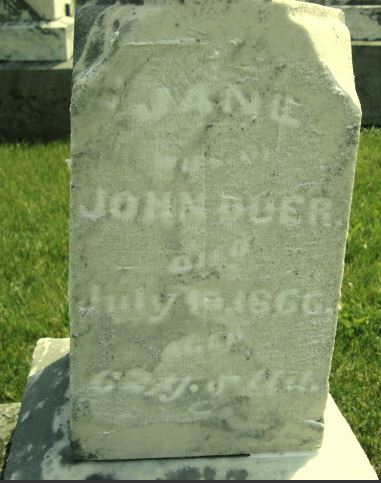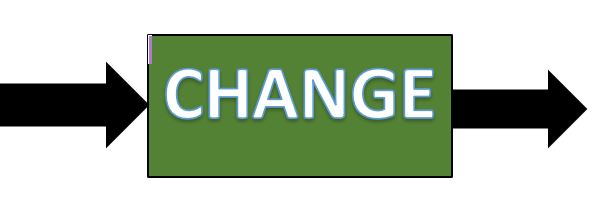
Do you have a family line that just fascinates you? Mine is the Duers who emigrated from England to New Jersey, moving on to what is now West Virginia and then into Ohio.
I’ve blogged before about the difficulty of identifying individuals as each generation reuses names – John, Thomas, Daniel, Joseph, and John(athan). I have been trying to prove for years that patriot John Duer (1758-1831) had a son, Thomas, who predeceased him. Thomas had a son, John, whose burial location was unknown. Both of grandson John’s wives, Jane and Margaret, were buried in Kessler Cemetery, aka Liberty, in Chattanooga, Mercer, Ohio.
Several years ago I contacted the cemetery staff and they kindly sent me a handwritten listing of burial plots. John Duer was shown buried in row 6 space 23. Unfortunately, that’s not the John I’m seeking; that John was the man I’m seeking’s son John Fred (1836-1939).
While I was in Fort Wayne recently at the genealogical library, I asked my husband to check books for cemetery records in Mercer County, Ohio. John died in Allen County, Indiana, across the border from Mercer as that is where he owned property later in life and had his will probated. No obituary has been found for him. His will omitted many of his children from his first marriage. My theory was that he was buried in an unmarked grave either in Adams County, Indiana, or in Kessler Cemetery.
My husband is not interested in genealogy and sometimes, not having a background makes for the best finds. He didn’t bother using the indexes provided in the back of the books. He scanned every page for the name John Duer. He also was looking for alternative spelling as he was aware that the original spelling was Dure. In Judith Burkhardt & Gloria Schindler. Mercer County, Ohio Cemetery Records of Liberty Township (1987) he hit gold! The last entry on the last page (52) noted in Row 15: “Next several stones missing, sunken in ground or unreadable John Duer – Unreadable”
Wow! It’s likely this was the John that I was trying to find. He wasn’t listed on the Kessler Cemetery sheet sent to me because the document only went to row 8. I had no idea I hadn’t been sent the entire cemetery listing.
I definitely need to take a trip to Kessler to see the stone for myself. I’m not holding out hope I’ll be able to glean information from the stone that was unreadable 34 years ago but I still need to make the attempt.
Interestingly, the Burkhardt & Schindler book also noted that the first wife, Jane’s, tombstone death year was 1888 which is a mistranscription. Her stone is shown above. Actually, that death year on her stone is probably also in error. John married second 11 December 1864 to widow Margaret Martz Searight. It is likely that his first wife Jane died in July 1861-4; no divorce record was found by staff who searched in Mercer County.
I definitely need to check for myself and also search divorce records in Adams County, Indiana, where John purchased a property in 1860, leaving Jane off the deed. When they lived in Holmes County she was listed as an owner with him.
I suspect her tombstone was not added until after the Civil War as the family had several sons and sons-in-law fighting for the Union. I’m thinking 1866 was the year they had the tombstone installed. Or, there was a divorce I haven’t yet found.
Boots on the ground are still necessary and it’s definitely exciting to step away from the computer to make a find in person. Kudos to my husband who made this exciting discovery for me. Happy Hunting!


